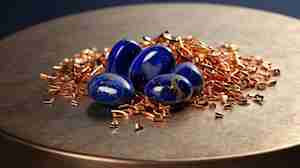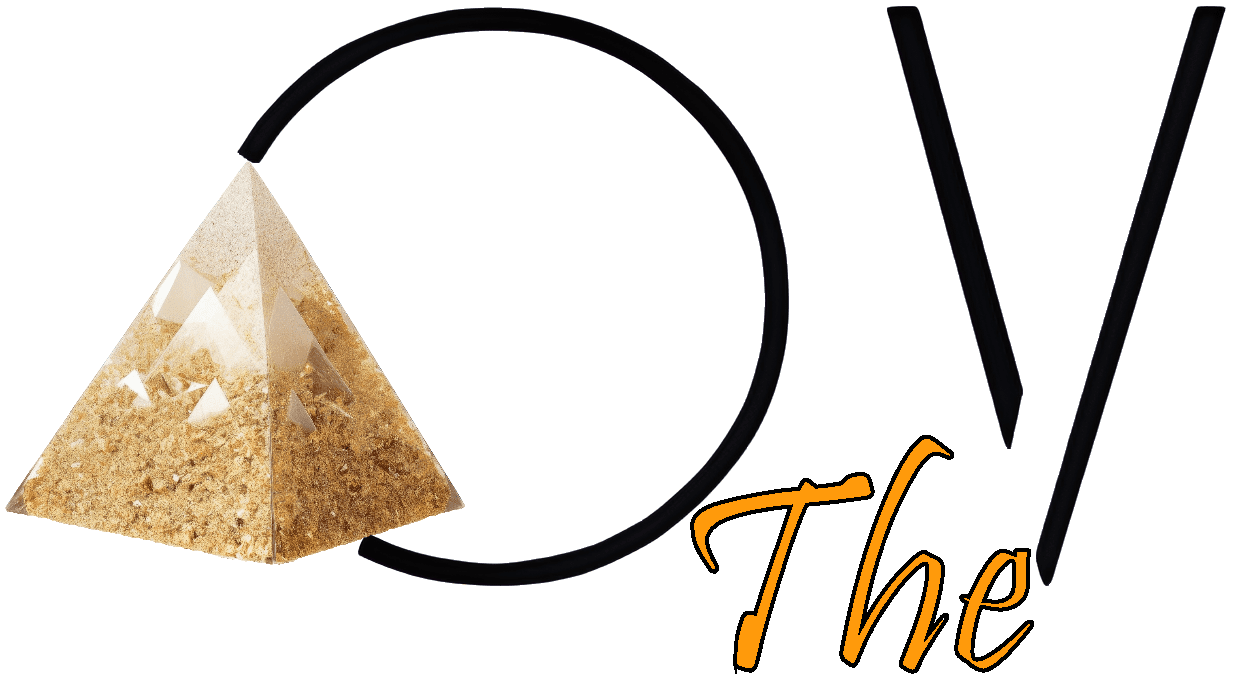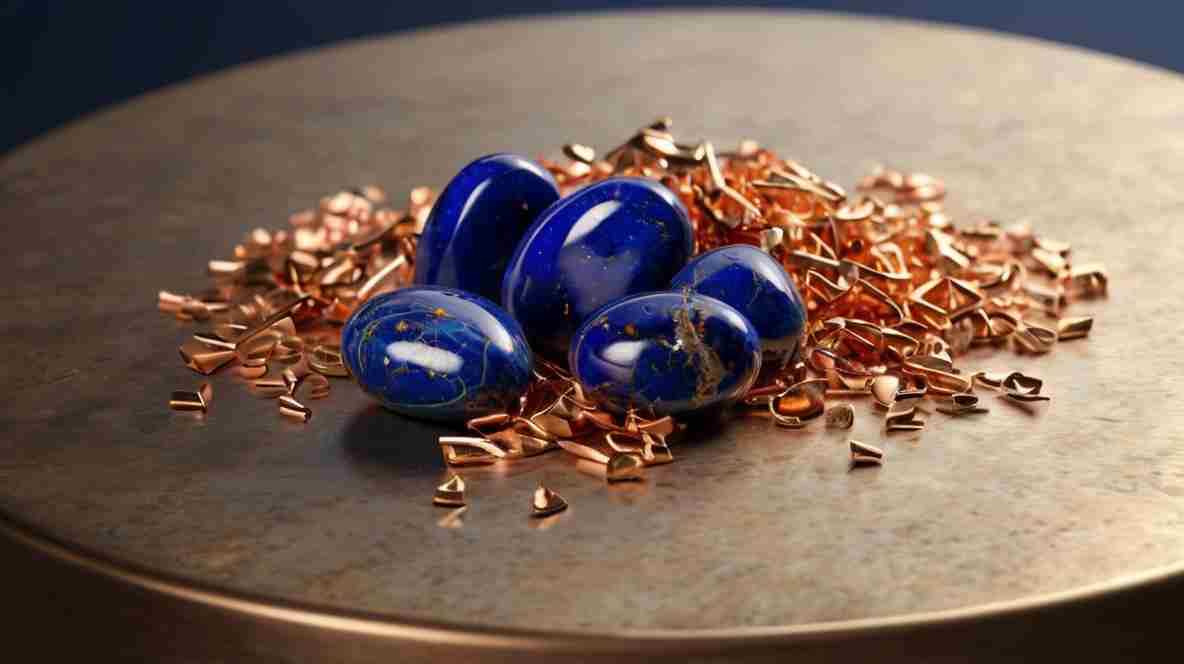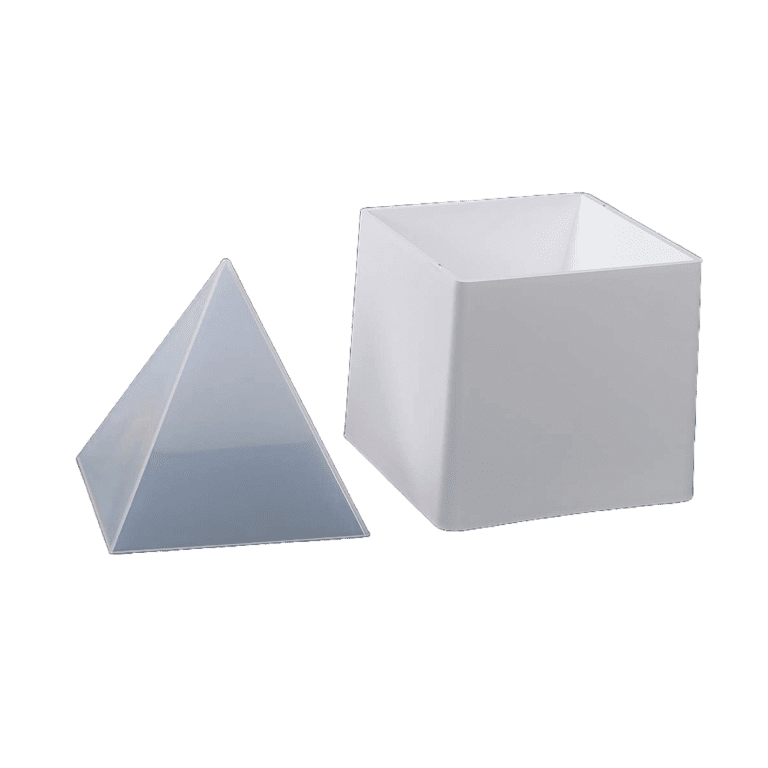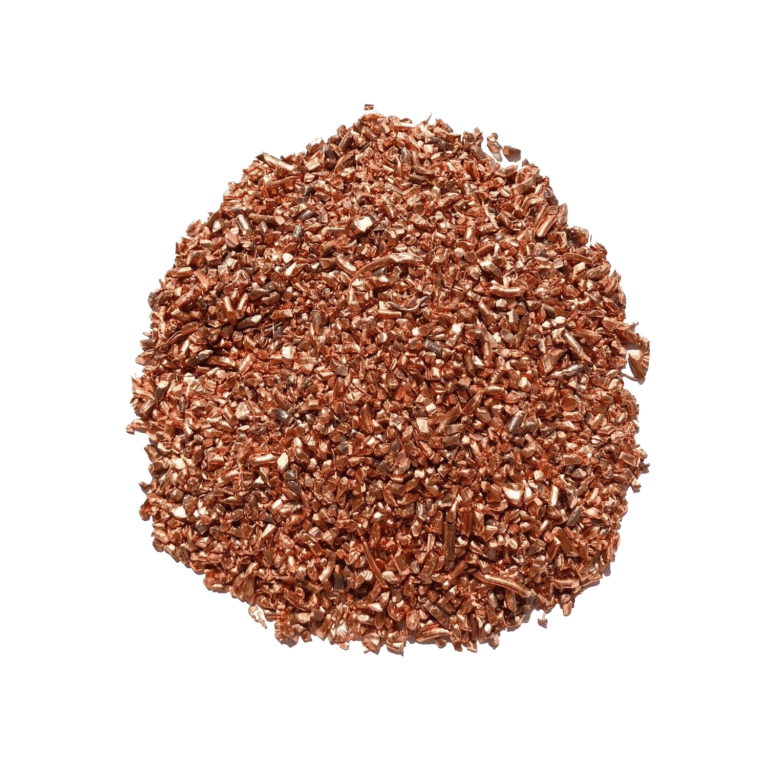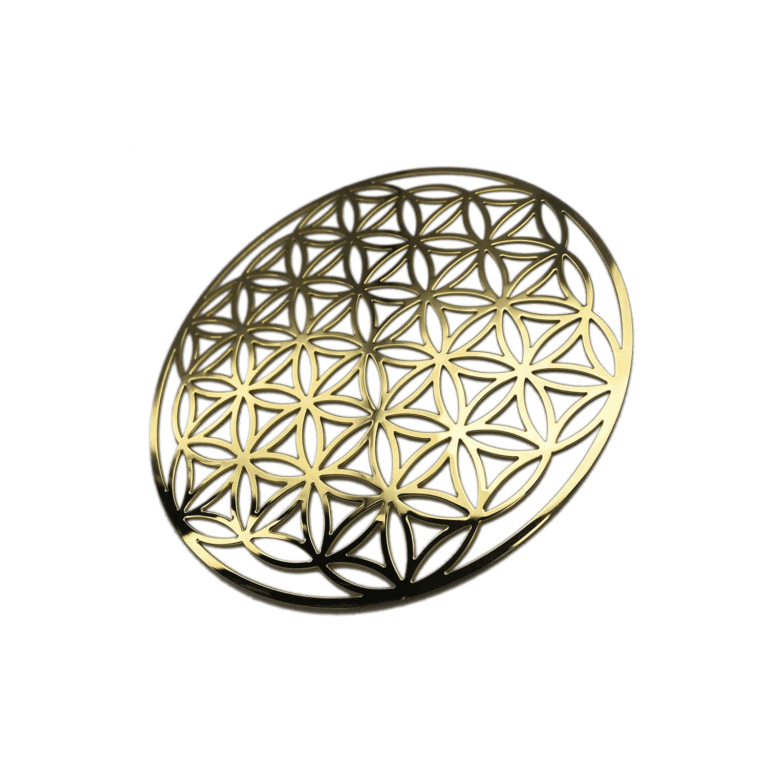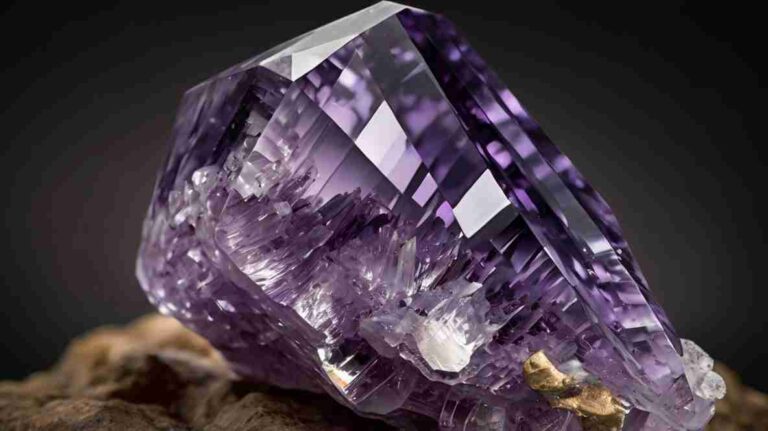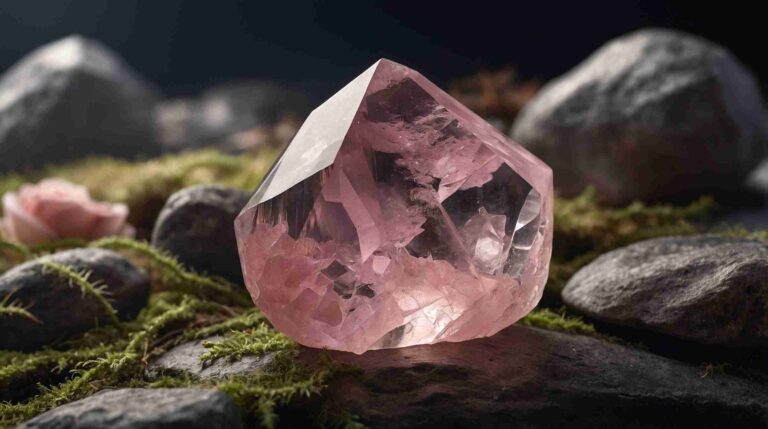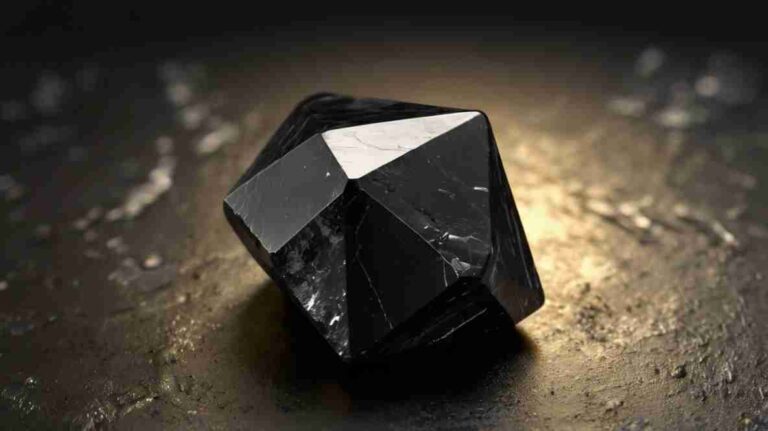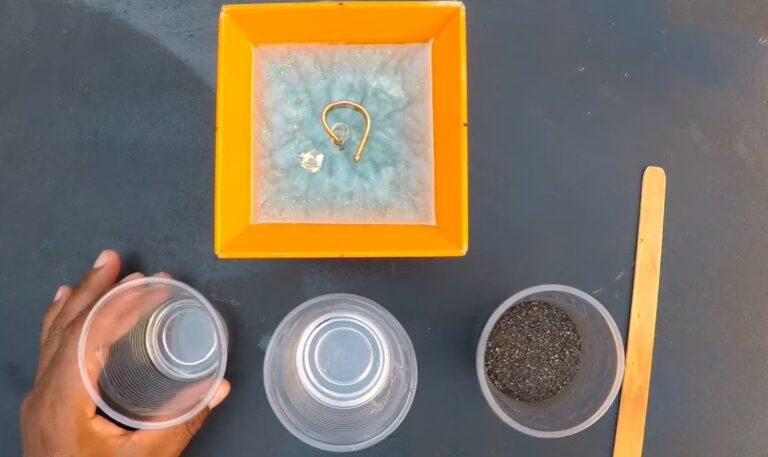In this article you will find general information on DIY Orgonites. We will see topics related to safety, factors to consider when choosing a resin, etc. In the next articles we will see step by step how to make the different types of orgonites such as a pyramid or a pendant.
WHICH ARE THE MAIN ELEMENTS TO CONSIDER WHEN DIY ORGONITES?
In summary, the elements that you must consider to make an orgonite are:
FUNCTIONAL ELEMENTS
- Safety gloves.
- Safety mask.
- Safety googles.
- Glass or similar to mix some ingredients.
- Scale for weighing ingredients.
- Mold: will act as a container, usually made of silicon.
- Binder resin: usually polyester or epoxy.
- Isopropyl alcohol to avoid bubbles formation.
- Orgone accumulators: usually in the form of metal shavings or small metal pieces
- Healing crystals: will act as an orgone generators and will transmute negative energy into positive.
- Sacred Geometry stickers that will enhance the effect of healing crystals.
ORNAMENTAL ELEMENTS
- Color ink for resins.
- Glitter.
- Polishing pads
GETTING STARTED. WHAT SHOULD YOU CONSIDER WHEN CHOOSING THE SAFETY ELEMENTS?
This is the most important point and one that should never be underestimated. You will be working with chemical products (resins, accelerants, dyes, etc.), as well as with abrasive elements (metal shavings, etc.). It is essential that you use protective elements and that they are appropriate.
WHAT ARE THE BEST GLOVES TO MAKE AN ORGONITE?
To choose the best gloves, you need to take into consideration the type of risks you will face. First, you are going to manipulate resins. Both polyester and epoxy resins are powerful adhesives that, if they come into contact with your skin, will cause cracks, dryness and irritation. But in addition, when they are in a liquid state, they can be carcinogenic. On the other hand, you will be handling abrasive elements, such as metal shavings or even sandpaper or polishing pads. These elements can cause small cuts and wounds on the skin. Faced with all these risks, the glove that can offer you the best results is a nitrile glove.
Nitrile is a special type of rubber, made up of butadiene and acrylonitrile, with very good flexibility, and which is also formulated to offer maximum resistance to oils, greases, and solvents.
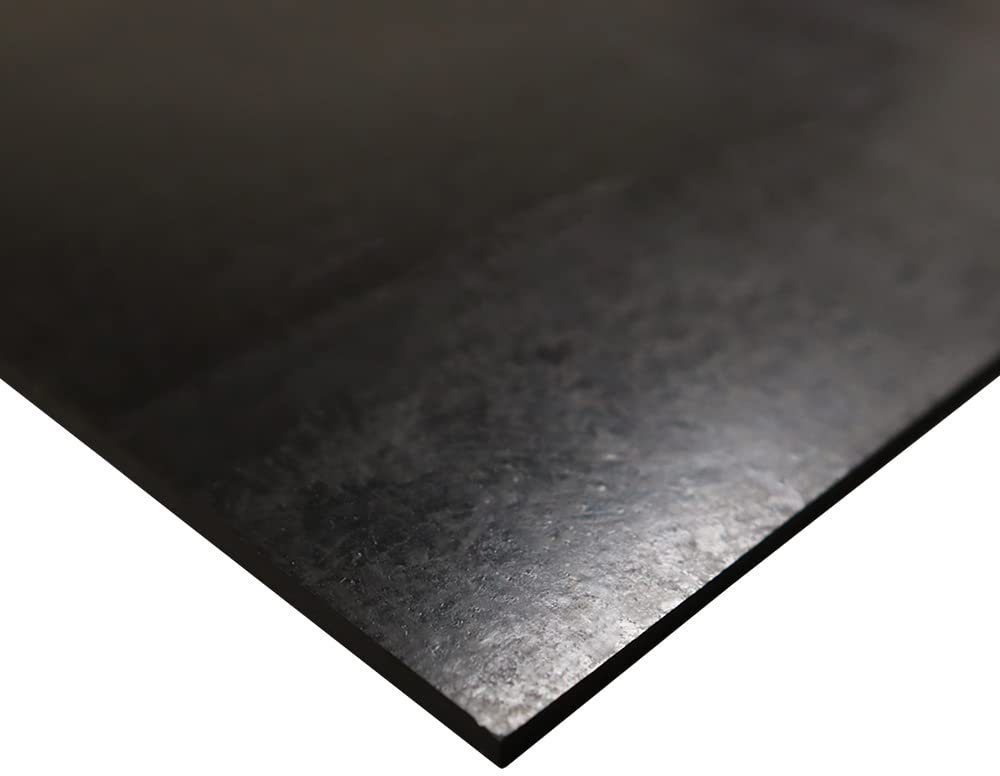
In the case at hand, if you accidentally spill resin on your hand, the glove will protect you without dissolving or softening. On the other hand, in terms of mechanical properties, modifying the percentage of acrylonitrile in the rubber formulation, good abrasion resistance can be achieved, making it also a good material to protect against small accidental cuts or tears caused by contact with metal shavings or sandpaper.
Once we know that we need nitrile gloves, we are going to analyze the different types that we can find in the market.
DISPOSABLE NITRILE GLOVES
Among nitrile gloves, this is the simplest model. It corresponds to a single-use glove. They are normally presented in packages of 100 units at a very reasonable price, and their main advantage is that they are quite thin, and the touch sensation is very good. As a disadvantage, it should be noted that although they perform their function perfectly when it comes to protecting against contact with resins, they are not so good when it comes to mechanical protection. Within this category of gloves, we find them with powder and free of it. Powder improves adhesion when greasy items have to be handled. For our application, we will choose them free of powder, firstly because we will not handle anything that is slippery, and secondly, to avoid possible contamination of our orgonite.

Nitrile
Comfortable fit with textured fingertips for excellent tactile sensitivity.
Extraordinary strength, stretchable durability and puncture resistance with premium iris blue color.
NITRILE COATED GLOVES
This category of glove consists of a fabric to which a layer of nitrile is applied on top. Normally this layer is applied to the palms, which is the area most exposed to contact with dangerous elements. As an advantage of this glove, we can highlight its durability and greater mechanical resistance, which makes it the ideal option for making an orgonite. As a disadvantage we can mention the higher cost, as well as a lower sensation of touch, since the glove is usually thicker.
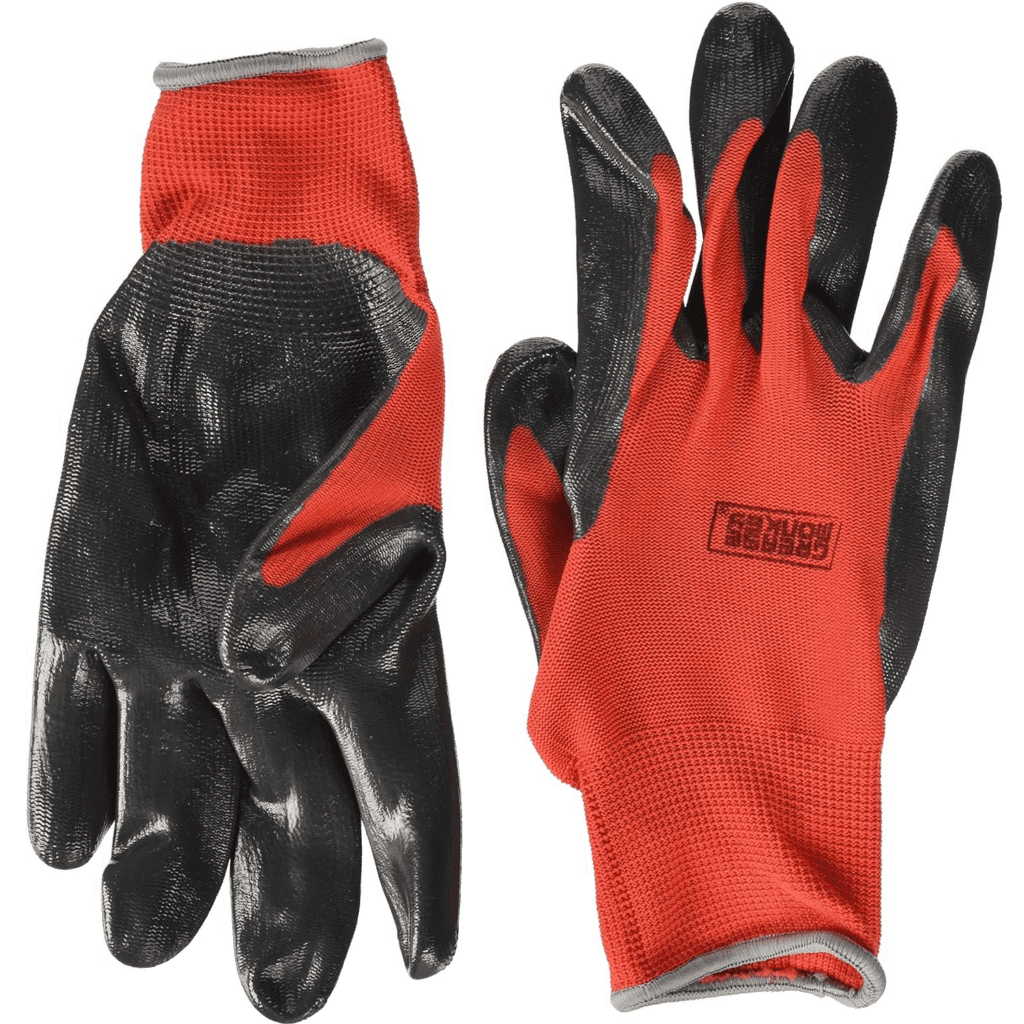
- Maximum Hand Protection and Dexterity
- Durable, ballistic nitrile coating with a breathable nylon shell
- Protects hands and provides tactile gripping
- Foam Nitrile coating: latex-free coating provides additional protection while resisting punctures and abrasions
WHAT SAFETY MASK SHOULD YOU USE TO PROTECT YOURSELF DURING THE DIY ORGONITES PROCESS?
You are going to handle polyester and epoxy resins. The polyester ones, especially, have a high emission of volatiles that, apart from having an extremely unpleasant odor, can cause nausea, dizziness, vertigo, etc. In the long term they can also be carcinogenic. This is why choosing a good mask is crucial. For our application we will need a double activated carbon filter mask. This type of masks combine comfort with a high degree of protection. They normally combine active carbon filters with cotton filters, offering maximum protection against gases and vapors, and are highly appreciated in the painting and construction sectors. Needless to say, they will also protect you from inhaling small particles of metal shavings.
Another important point to consider is whether we need to purchase a mask that covers the entire face or only the nose and mouth. In this case the choice will be personal. Masks that only cover the nose and mouth are more comfortable, especially if you are going to work for many hours in a row. On the contrary, masks that cover the entire face are more uncomfortable but will save you the investment in safety glasses.
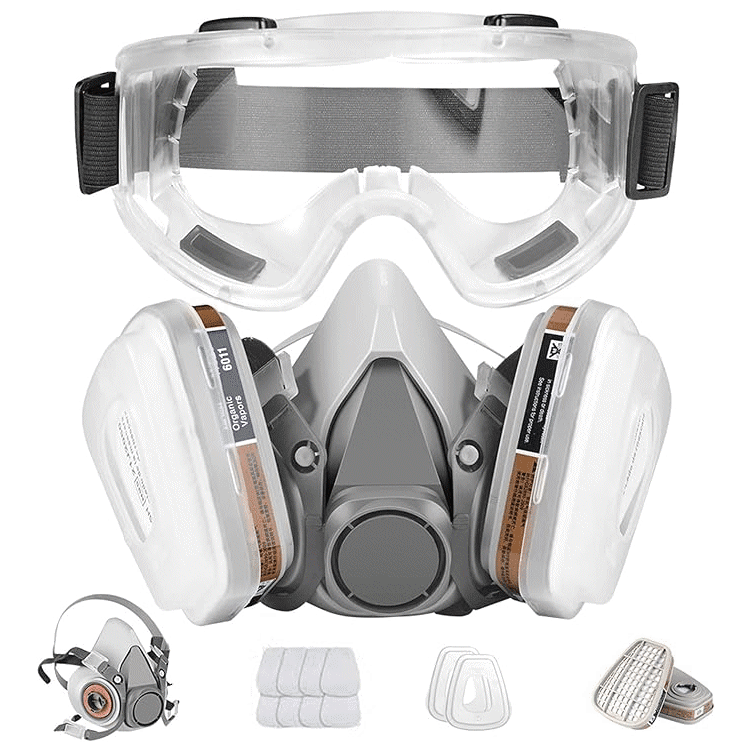
Respirator mask for DIY
Face cover adopts double filtration system that can effectively obstruct of organic vapor/gas, smoke, pollen, dust and other particles in the air. It is the ideal respiratory protective device for your life and work.
TO MAKE A GOOD CAKE YOU NEED A GOOD MOLD!
When it comes to molds our recommendation is not to get complicated. Choose a silicone mold. It is true that you can make the mold with cardboard and tape or any other material, but the result will not be the same and will require a lot of finishing work later. Silicone molds are cheap, effective, and trouble-free.
Silicone is a polymer with an atomic structure based on silicon and oxygen, with excellent thermal stability, flexibility, and most importantly: with low chemical affinity with other materials. The latter means that this material does not interact or react with most elements such as water, oil, adhesives, etc. The affinity or reactivity of a material is measured by surface energy. The lower the value, the less reactive the material is. In most metals, the surface energy value is between 500 and 1000 dynes/cm. In the case of silicone this value is 24 dynes/cm.
This makes it an excellent material to be used in molds, where precisely what is intended is that the interior content does not remain stuck to the walls of the mold. If we add to this that, thanks to its flexibility, demolding is very simple, we find ourselves in front of the perfect material to use as a mold in the DIY orgonites.
THE RESIN. POLYESTER OR EPOXY?
First let’s start by explaining what each one is and what its properties are.
POLYESTER RESIN
Polyester resins are synthetic chemical compounds made up of two chemical ingredients. Normally in a liquid state, they solidify and harden when a catalyst, more correctly called an initiator, is added. Their main advantage is a very low price, which is why they are widely used in a multitude of industrial applications, such as in tank repair.
Its main advantages are:
- Low cost compared to other options.
- They require very little catalyst. An amount that can be between 2 and 4%
- Resist temperatures up to 80 degrees Celsius.
- Correct resistance to weather and UV rays
- They have a shorter drying time than other solutions.
EPOXY RESIN
Epoxy resins are chemical compounds capable of reacting with other compounds called hardeners. Therefore, in this case and unlike polyester resins that require small amounts of catalyst, we are talking about two ingredients that are mixed in almost equal parts.
Its main advantages are:
- Excellent mechanical, electrical and thermal properties.
- Resistance to acidic liquids.
- Excellent transparency
- Low odor during preparation
WHAT IS THE BEST RESIN WHEN MAKING AN ORGONITE?
In general, both polyester and epoxy resins are perfectly valid options in the creation of an orgonite. The choice of one or the other will be determined by each of the comparative aspects that we show below.
| POLYESTER | EPOXY | |
|---|---|---|
| Cost | ||
| Required amount of catalyst | ||
| Mechanical and weather resistance | ||
| Cured resin transparency | ||
| Less toxicity of vapors | ||
| Better smell of vapors |
Based on the comparison we can conclude that although epoxy resin is more expensive and requires a greater amount of catalyst to activate, it has notable advantages over polyester resin. To begin with, its vapors are less toxic and smell better than those of polyester resin. Its joints are mechanically stronger and, as it has better resistance to UV rays, it yellows less over time. The transparency of the resin is also a little higher.
For all these reasons, epoxy resin offers greater quality and less danger in the process of DIY Orgonites. However, personal assessments such as budget, the possibility of working outdoors or with good ventilation, etc. should also be considered in the final decision.
One last thing that is very important to remember is to always choose a transparent resin.
METAL SHAVINGS, ESSENTIAL TO BUILD A GOOD ORGONE ACCUMULATOR
You already know that in the construction of an orgonite, conductive metals are necessary to act as orgone accumulators. There is debate about what should be the minimum ratio of metal that should be used with respect to resin. Some experts talk about a minimum of 50% metal, however, there are no studies in this regard nor is this ratio accepted as an essential requirement. More important than the amount of metal used is its type and properties.
The main factors to consider when choosing a metal are the following:
- Electrical conductivity
- Toxicity and danger
- Easy to find in the form of shavings or wire.
- Cost of the metal
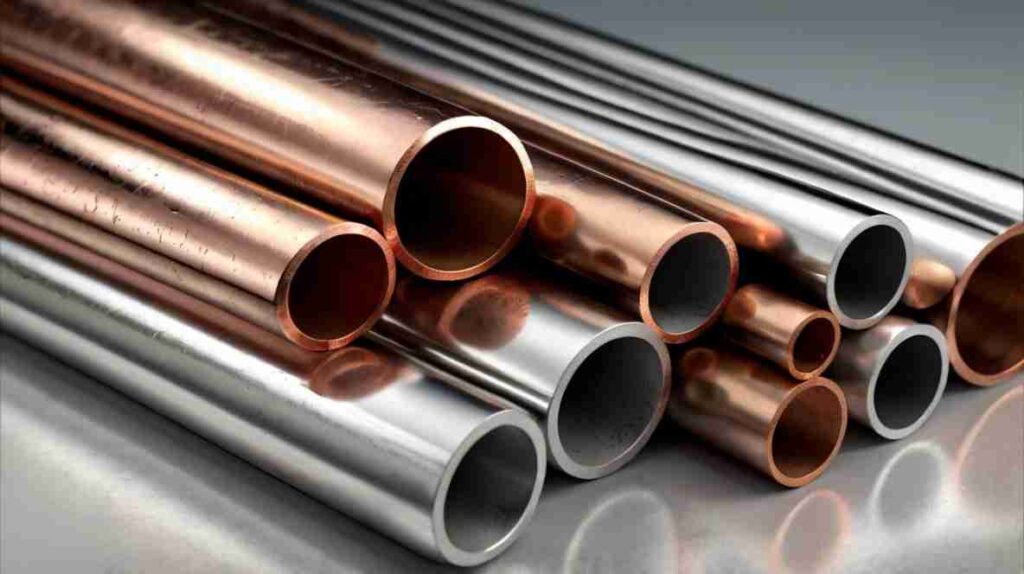

ELECTRICAL CONDUCTIVITY
Metals are added so that they capture negative orgone energy from the environment, so it is important that this flows through it. For this reason, it is essential to choose metals with high electrical conductivity since there is a direct relationship between the circulation of electric current and that of orgone energy. The greater the resistance to the flow of current, the greater the resistance to the flow of orgone energy.
Below we show a chart with electrical conductivities of different metals.
| METAL | CONDUCTIVITY (Sm1) |
|---|---|
| Silver | 63 x 10^6 |
| Copper | 59,6 x 10^6 |
| Gold | 45,2 x 10^6 |
| Aluminium | 37,7 x 10^6 |
| Beryllium | 31,3 x 10^6 |
| Calcium | 29,8 x 10^6 |
| Magnesium | 22,6 x 10^6 |
| Rhodium | 21,1 x 10^6 |
| Sodium | 21 x 10^6 |
| Iridium | 19,7 x 10^6 |
| Tungsten | 18,9 x 10^6 |
| Molybdenum | 18,7 x 10^6 |
| Cobalt | 17,2 x 10^6 |
| Zinc | 16,6 x 10^6 |
| Nickel | 14,3 x 10^6 |
| Potassium | 13,9 x 10^6 |
| Cadmium | 13,8 x 10^6 |
| Ruthenium | 13,7 x 10^6 |
| Indium | 11,6 x 10^6 |
| Osmium | 10,9 x 10^6 |
| Litium | 10,8 x 10^6 |
| Iron | 9,93 x 10^6 |
| Platinum | 9,66 x 10^6 |
| Palladium | 9,5 x 10^6 |
| Tin | 9,17 x 10^6 |
| Rubidium | 7,79 x 10^6 |
| Chromium | 7,74 x 10^6 |
| Strontium | 7,62 x 10^6 |
| Tantalum | 7,61 x 10^6 |
| Niobium | 6,93 x 10^6 |
| Gallium | 6,78 x 10^6 |
| Technetium | 6,7 x 10^6 |
| Thorium | 6,53 x 10^6 |
| Thallium | 6,17 x 10^6 |
| Rhenium | 5,42 x 10^6 |
At first glance we could consider the first ten positions to make our orgonite, but it is at that moment when we must consider the next points.
TOXICITY AND DANGER
Some metals such as cobalt or cadmium are toxic and carcinogenic if inhaled. Others, such as sodium, ignite spontaneously in contact with air and react violently with water. It is therefore evident that not all metals can be used equally in the process of DIY orgonites.
If, as we mentioned before, we take the list of the top ten metals in terms of electrical conductivity, we would have to discard sodium, magnesium, and calcium due to safety problems. Therefore, only silver, copper, gold, aluminum, beryllium, rhodium, and iridium would be available to us.
AVAILABILITY
Some metals are not worked on a regular basis, either due to cost, properties, or type of application. Tungsten, for example, is a very hard metal, whose main use in alloy form is for tools that will be used for cutting and abrading other metals. It is therefore a difficult material to find in the form of shavings even though it has good electrical conductivity, and its use could be considered to make orgone generators. In our hypothetical list of the ten best metals to DIY Orgonites we should, according to this criterion, delete beryllium.
COST
This is the most obvious factor of all. To ensure our orgonites are marketable, we must utilize metals that are competitively priced.
On the left the historical price of silver, on the right that of copper. In March 2024, silver was quoted in the markets at a price nearly 6 times higher than that of copper.
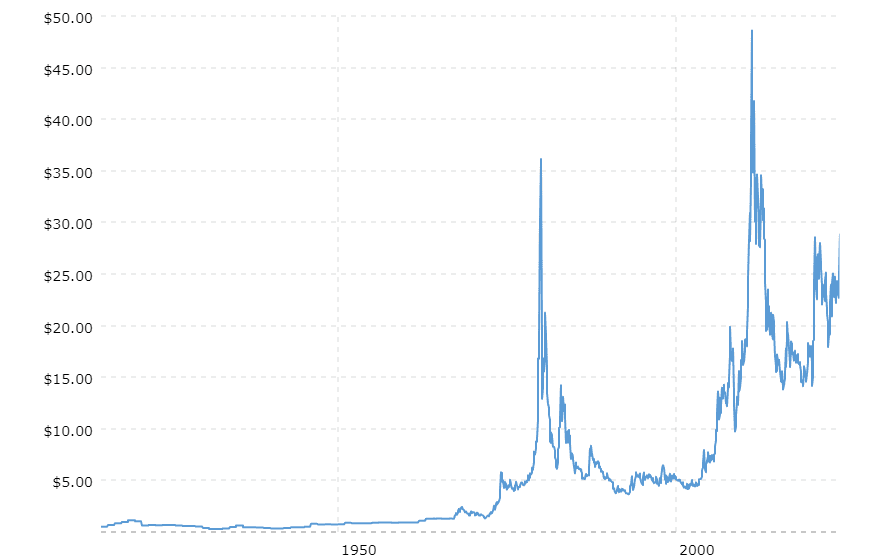



BUT FINALLY, WHICH ARE THE BEST METALS TO DIY ORGONITES?
Considering everything we have talked about, finally the options are limited to a series of metals with good or acceptable conductivity, an affordable cost, correct availability, and little or no danger. The most common options are copper, aluminum, bronze, brass, and iron or steel.
We generally advise opting for copper when feasible. Despite being slightly pricier than aluminum, copper offers superior conductivity and imparts a stunning reddish hue to your projects. Additionally, copper wire is readily available to embellish your creations further..
HEALING CRYSTALS
Incorporating healing crystals is one of the most enchanting aspects of crafting an orgone generator. Beyond the inherent beauty of the crystals, comprehending their benefits and creating an orgonite that fulfills your specific needs and expectations is a significant part of the process.
We provide a chart for you to review the properties of the most common crystals. Utilize it thoughtfully for your creations.
Let’s provide a few examples of usage.
DIY ORGONITES EXCLUSIVELY FOCUSED ON ENHANCING RELAXATION ABILITIES AND REDUCING STRESS
A careful examination of the chart reveals that amethyst excels as a healing crystal for stress reduction, yet it is less effective for enhancing relaxation. Further analysis of the chart indicates that selenite is another crystal that offers a completely complementary effect.
A good combination, therefore, whenever you want to make an orgonite with the mentioned properties, would be to combine amethyst and selenite.
MAKING A GENERAL PURPOSE POWERFUL ORGONITE FOCUSED ON HELPING ARTISTS
When considering an artist, enhancing creativity is crucial, particularly for writers. Effective communication is equally important, especially for performers like singers or actors. Maintaining high levels of optimism and self-confidence can also be beneficial. Given these needs, one might consult a chart to find crystals or their combinations that could aid in bolstering these attributes.
There are several possible combinations, but, for example, you could choose to use a base of citrine and aventurine crystals to enhance creativity, optimism, abundance, and good luck, carnelian to boost self-confidence, all paired with an orgonite featuring the sacred Metatron symbol to better communication abilities. Another option would be to replace the Metatron symbol with aquamarine or lapis lazuli to improve communication skills and add the Flower of Life symbol to increase self-confidence.
SACRED GEOMETRY STICKERS. THE LAST TOUCH
As mentioned above, sacred geometry can play an important role in the DIY Orgonites process. Often, it can enhance our product’s benefits at a lower cost compared to healing crystals. Moreover, sacred geometry symbols crafted from copper may serve as orgone accumulators as well.
In short, our recommendation is to use the chart to choose those sacred geometry symbols that can enhance the effects of your orgonite and rely on them whenever you can.
CONCLUSIONS AND NEXT STEPS
So far, we have given a general overview of how to make an orgonite, what equipment is necessary, and how to choose the one that best suits your needs. As you may have deduced from the materials involved, we are not facing an excessively complicated process. In the following articles we will see the detailed step by step of how to build each of them.
